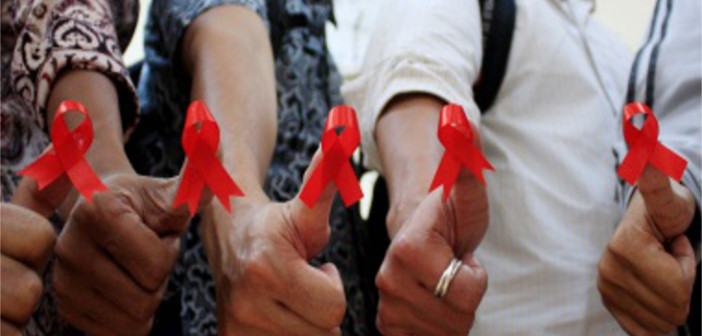Last week some of the world’s leading scientists and researchers gathered in Boston at the Conference on Retroviruses and Opportunistic Infections (CROI). “What’s next for women?” was the question on the minds of many, after results were released from two trials that looked at one of the most promising new HIV prevention tools of our time: the long-acting dapivirine vaginal ring, a female-controlled HIV prevention method that could potentially protect women for up to a month at a time. ASPIRE (MTN 020) and The Ring Study (IPM 027) looked at the safety and effectiveness of these women-controlled devices; their results were among the most anticipated data to be released at the conference.
The news from CROI was encouraging and potentially far-reaching – trial results found the ring to be effective in preventing HIV infection among women (27% and 31% protection overall among the roughly 4,500 women enrolled in these two studies). Importantly, adherence to the ring was shown to be a critical element for protection: when excluding two sites with low adherence, protection in ASPIRE increased to 37%. Age was shown to have an important effect on adherence, and consequently protection. For women aged 18-21, ASPIRE demonstrated no protection, while The Ring Study showed only 15% protection. Conversely, for women older than 21 years old, protection increased to 56% for ASPIRE and 38% for The Ring Study.
| ASPIRE | The Ring Study | |
| Overall | 37%* | 31% |
| 18-21 years old | No protection | 15% |
| >21 years old | 56% | 38% |
| * Excluding two non-adherent sites § >25 years old: 61% efficacy |
This is truly a major advance for the field of HIV prevention, especially for women. It is clear – as was the case with oral PrEP – that we need to move quickly to open-label and demonstration projects to understand the real-world impact of this new intervention. These projects will help us better understand the difficulties younger women encountered in the two trials and whether young women can benefit from this intervention. Comparatively, it is reassuring that across all populations, adherence to PrEP has been better in open-label studies.
The vaginal ring is one more addition to an already exciting array of antiretroviral-based biomedical options in the prevention toolbox that has ushered in a new era in HIV prevention. For the first time, a real prevention menu is beginning to take shape. Whether people prefer a plat du jour set menu or à la carte, they’ll be able to tailor a combination prevention package specifically suited to their current circumstances, health, and preferences. We’ve come a long way, and not a moment too soon!
Despite immense progress in diagnostics and antiretroviral (ARV) treatment, every year roughly two million people worldwide become newly infected with HIV. The situation is particularly grim for women and young girls in sub-Saharan Africa, where women account for more than half of all people living with HIV, and the burden of disease continues to increase among young women. Offering a variety of effective prevention approaches to suit diverse needs for diverse populations at different times in their lives is the key to controlling the epidemic, at least until there is a vaccine and a cure. Interventions that address gender-based violence and the socioeconomic needs of young women must also be part of this comprehensive response. Our focus needs to remain inclusive, involving community mobilization and leadership at all levels. It must also be broad, encompassing the biomedical, behavioural, and structural components of combination prevention while respecting, protecting, and promoting sexual reproductive health and rights.
What then does our prevention menu have on offer for young women?
PrEP
A biomedical intervention that offers more self-directed and discreet HIV protection, for men and women alike, is ARV pre-exposure prophylaxis (PrEP). Although the prevention method is recommended by WHO and UNAIDS, only France, Kenya, South Africa, and the United States have approved Truvada – the combination tablet of tenofovir (TDF) and emtricitabine (FTC) – for HIV prevention use. Trials of daily oral PrEP among men who have sex with men (MSM), serodiscordant heterosexual couples, people who inject drugs, heterosexual men and women, and transgender women have shown that PrEP is safe and highly effective at preventing HIV infection. Trials of event-driven oral PrEP – where PrEP is taken intermittently before and after sex – have also demonstrated effectiveness among MSM. It is important to note, however, that all these trials have clearly shown that oral PrEP cannot work if pills are not taken (i.e. adherence is essential, as seen again today for the dapivirine ring). Studies are currently underway that explore whether other PrEP dosing frequencies and formulations will be as effective as or even more effective than oral PrEP. This includes trials of long-acting injectable ARVs for PrEP, currently underway globally.
Vaginal microbicides
An initial trial of vaginal tenofovir gel among South African women, CAPRISA 004, previously showed promise. But its findings were not confirmed by the FACTS 001 trial that also used an “on demand” dosing schedule, where a vaginal tenofovir gel was used before and after sex. The VOICE trial of vaginal tenofovir gel that relied on daily gel application also found no protective effect. Today, we heard the first, encouraging findings from ASPIRE and The Ring Study. But the quest for an effective vaginal microbicide is not over. Open-label extensions of these two studies, HOPE and Ring OLE, will hopefully start during 2016 and soon provide additional real-life effectiveness information on these methods. Other microbicide trials are also underway, looking at safety, tolerability and acceptability of other ARVs and delivery methods such as vaginal gels and tablets.
Male condoms & circumcision
Male latex condoms represent one of the first and most commonly-used methods of prevention. Together with water-based lubricants, male condoms remain a cornerstone of any prevention menu. But male condoms are, quite obviously, not entirely within the control of women. After decades of pitching this as the primary method of prevention for sexually active young women, it is clear that many factors impede a woman’s ability to negotiate condom use. Additionally, women living in areas where there has been a scale-up of voluntary medical male circumcision may benefit from a reduced risk of encountering a sexual partner with HIV infection, but the main direct benefit of circumcision is for men.
Female condoms
Female condoms have the distinct benefit of bringing the locus of control closer to women. To date, two types of female condoms have been pre-qualified by WHO/UNFPA: Cupid and FC2. FC2 is the only female condom approved by the U.S. Food and Drug Administration; it is indicated for prevention of both unintended pregnancies and sexually transmitted infections (STIs), including HIV. However, the female condom is a barrier method that still requires some measure of negotiation, cooperation, and consent of a sexual partner.
So what’s next for women?
Now it is more critical than ever that national regulatory bodies move rapidly to recognize the opportunity that currently proven PrEP and microbicide vaginal rings offer to reduce HIV infections among women. People will need to understand why PrEP and microbicides are important and how they can help. Practitioners will also need training in prescribing these interventions and supporting patients to ensure effective use. We all have a responsibility to expand access to these life-saving prevention options. It is important to emphasize, however, that neither PrEP nor the microbicide vaginal ring offers protection against STIs, and they are not contraceptives. At the moment, studies that are looking at multipurpose technologies for women, combining HIV prevention with STI prevention and/or contraception, hold great promise. With the positive results from ASPIRE and The Ring Study, dual protection vaginal rings might soon become reality, adding to the only two dual protection methods currently available: male and female condoms.
There is still much more to be done. There is an urgent need to deploy these tools in the right way to the right people. At the same time, we must continue to explore new innovations that will improve and further expand the menu of prevention options for women. The exciting results from ASPIRE and The Ring Study bring new hope in this area.
We must also remember that treatment is prevention. Efforts to help women and men learn their HIV status are essential; once a person knows their status, they can receive treatment if they are infected, or can explore and adopt an effective HIV prevention strategy if they are not. People on treatment are able to control their virus, suppressing their viral load to such a point that their risk of transmission is nearly eliminated. HIV-infected women who know their status and are receiving regular treatment not only can reduce mother-to-child transmission but also lower their risk of transmitting HIV to their sexual partners; this can help lessen their anxiety about sexual partnerships. Beyond the prevention impact, we know that if all 37 million people living with HIV worldwide receive treatment, they will live longer, healthier lives. This is certainly a revolution!
Despite the optimism that surrounds us, we must remain vigilant to ensure that effective prevention tools are put in the hands of women, that there is continued quality improvement along with research to develop new options, and that our leadership actively supports the scale-up and roll-out of combination prevention tools for women. In achieving this, it is vital that we support women as champions of our shared efforts toward a world free of AIDS.
Authored by: Lisa Levin (The Female Health Company, USA), Cate Hankins (Amsterdam Institute for Global Health and Development, The Netherlands),Brent Allan (Living Positive Victoria, Australia), Rahab Mwaniki (National Empowerment Network of People Living with HIV/AIDS, Kenya), Nelli Bazarova and Sebastien Morin (International AIDS Society, Switzerland) and Linda-Gail Bekker (Desmond Tutu HIV Centre, South Africa.




